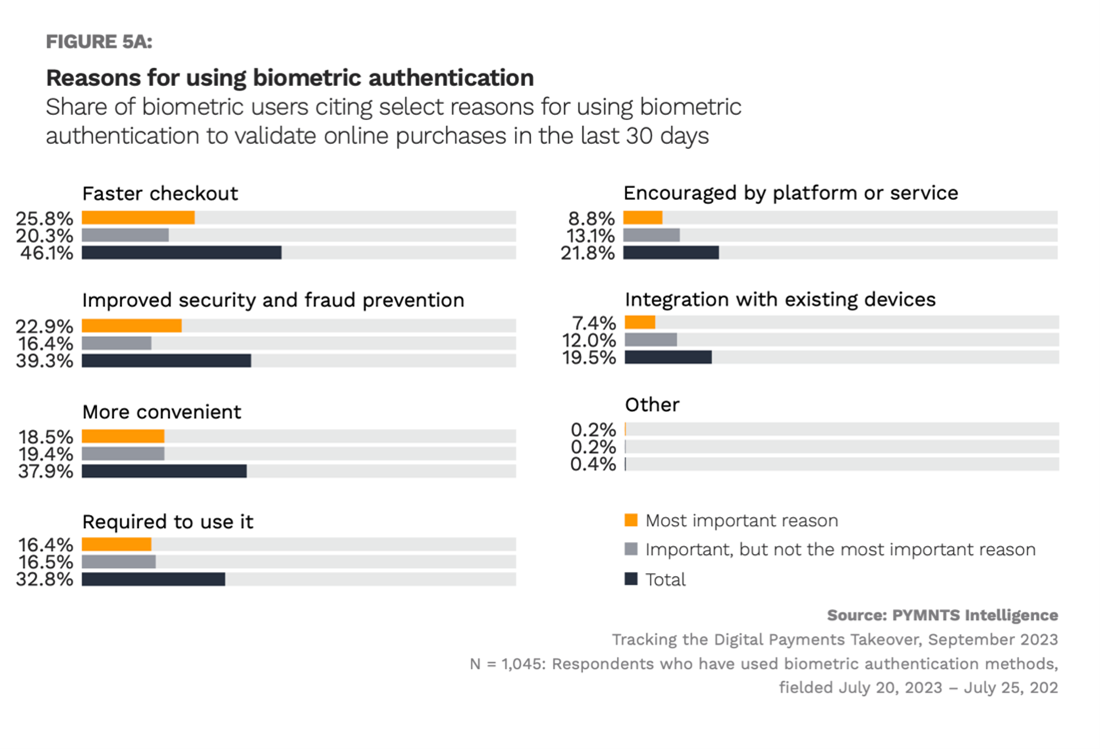Biometrics May Be Online Retail’s Ticket to More Sales

Retailers are leveraging innovative solutions, such as biometrics, to enhance convenience, security and personalized services in their day-to-day business.
Biometrics systems are gaining popularity as an authentication method for more and more digital tasks, including retail purchases. Retailers can offer customers a seamless shopping experience by using facial recognition or fingerprints. In a context of economic uncertainty and high promotional intensity, such as the upcoming holiday season, this can be a differentiating factor. Facilitating the identification and payment process for customers, providing them with more personalized offers, or targeting them with relevant adverts during the next Black Friday or Christmas sales period can translate into an increase in sales.
Gaining Ground Among Consumers
According to the study, “Tracking the Digital Payments Takeover: Biometric Authentication in the Age of Mobile,” a PYMNTS Intelligence research in collaboration with Amazon Web Services, nearly 60% of the U.S. consumers who made online purchases in the last month used biometric authentication to validate their transactions.
Biometrics adoption is even broader when purchasing on mobile devices, with 8 in 10 consumers across every generation using this method. Facial recognition and fingerprint scans are the most widely used biometric methods for validating online transactions on mobile devices. Older consumers are more likely to use the latter, while younger consumers more often use the former.
The research also found that offering rewards or discounts for using biometric authentication could persuade those who said they weren’t interested in these methods. At least half of consumers would reconsider adopting them in the future in exchange for rewards. Wider merchant acceptance, multiple device availability, and control over authentication frequency are also factors that can encourage biometric usage.
This system is becoming increasingly relevant to consumers and is enhancing their shopping experience. As per the PYMNTS Intelligence study, almost half of consumers state that a faster checkout process is the most important reason to use biometrics, outperforming security and fraud prevention as the second most cited reason.

In physical retail stores, cashless payments enable customers to make purchases quickly and easily. For instance, Amazon’s Just Walk Out Technology allows customers to enter, shop and exit without waiting in line. The technology uses cameras to monitor customers’ actions and automatically charges their accounts for the items they take.
Mastercard is another of the payments giants that is pushing biometrics systems on several platforms worldwide. Last year, the company launched in Brazil its “Smile and Pay” offering, allowing in-person payments to be transacted with a smile or the wave of a hand. More recently, it has teamed with NEC to bring biometric facial recognition checkouts to the Asia Pacific region. The company says that technology benefits for merchants in both applications include shorter waiting times and seamless purchasing processes while offering a “more engaging relationship” with customers.
The retail industry is undergoing a transformation driven by biometric authentication and cashless payments. Despite concerns about privacy and data security, the benefits of these technologies outweigh the risks. Widespread adoption of biometrics systems and cashless payments is expected to continue, reshaping shopping behavior and driving revenues from them.